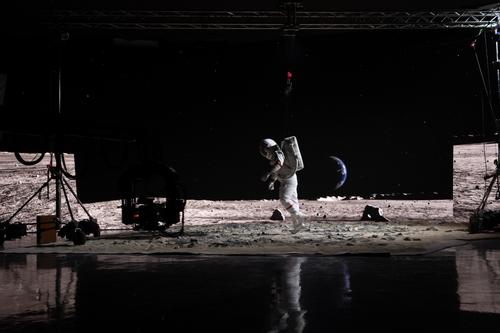Green Shots: Sustainable film production
According to a joint report from BFI and ARUP, the average high-budget film production generates 2,840 tonnes of CO2 – that’s roughly the same amount absorbed by 3,709 square acres of forest over the course of a year. And to many, such a high figure won’t come as a surprise; film productions are complex operations, spanning numerous geographical locations and relying on energy-sapping specialist equipment and processes.
Our industry is, however, aware of the need to change. The movement for sustainable film production is picking up pace, and has been given an unexpected boost by the coronavirus pandemic. Production teams are looking to cut both their emissions and costs, whilst ensuring that they continue to innovate and keep their members safe. Here are the main ways that they’re doing so.
Virtual Production
Virtual Production (VP) can be defined as the integration of real and virtual production elements on a live set. The combination of camera tracking technology with powerful graphics engines has made it possible to film scenes in photorealistic virtual environments with effects in realtime. Aside from providing producers with unparalleled creative opportunities, VP is considered a sustainable film production technique for the following reasons:
- Reduced travel – Around 16% of a film’s carbon emissions derive from international travel, and a further 4% for accommodation. Respectively, this equates to 75 return flights from London to New York, and the average annual electricity consumption of 34 homes. VP reduces this by removing the need to travel to several locations to shoot. Whether using green screens or LED walls, it does this by virtually rendering different locations on a single set.
- Reduced use of (physical) props and materials – Computer-generated sets and props significantly reduce material waste. Industry expert, Richard James, even predicts the use of ‘digital prop libraries’ which are already commonplace in the gaming industry.
Sustainable sets
Where physical sets do need to be built, sustainable design principles should be followed. ‘Design for deconstruction’ and ‘parametric design’, for instance, are ideas which may allow film productions to reduce the environmental impact of their physical sets. The Australian-made ‘X-frame’, for example, is a highly flexible construction option which could be re-used across multiple sets with minimal material waste.
Another option to make sets more sustainable is to re-use materials. In its production of ‘Spider Man 2’ (2014), Sony Pictures managed to divert 52% of its set waste (lumber, steel, and glass) away from landfills and towards future projects. As a result, they saved approximately $400,000 in costs and earned a carbon neutral certification.
Renewable energy
As it currently stands, many studios rely on costly, inefficient diesel generators to power studios (the average production, in fact, uses enough of the fuel to fill the tanks of 11,478 cars). Although production teams are rarely in control of the source of their power, they do hold sway with the studios that do. Solar photovoltaics and wind turbines are viable options for many, whilst switching to a sustainable energy provider is a simple, fast way to improve green credentials.
Filmmaking is going through a green revolution. Catalysed by the coronavirus pandemic, film crews are relying more on VP and are paying closer attention to how they can streamline each stage of the production process. What’s emerging as a result is a leaner, greener, more cost-effective way of making films.
Want to learn more about virtual production and the film industry? Take a look at articles from Mo-Sys Academy. We’re here to help educate and inform those looking to make their first steps into the world of filmmaking.




